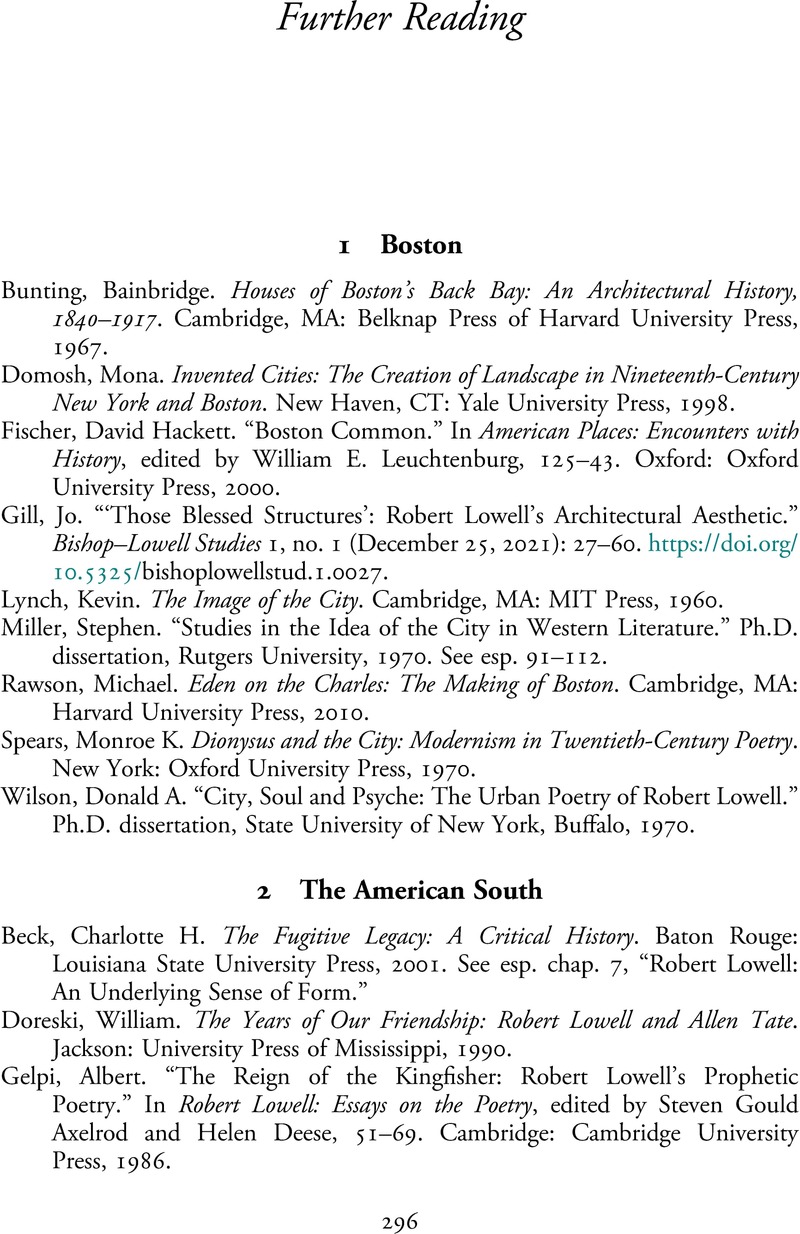Book contents
- Robert Lowell in Context
- Robert Lowell In Context
- Copyright page
- Dedication
- Contents
- Contributors
- Acknowledgments
- Abbreviations
- Introduction
- Part I Places
- Part II American Politics, American Wars
- Part III Some Literary Models
- Part IV Contemporaries
- Part V Life, Illness, and the Arts
- Part VI Reputation and New Contexts
- Further Reading
- Index
- References
Further Reading
Published online by Cambridge University Press: 28 March 2024
- Robert Lowell in Context
- Robert Lowell In Context
- Copyright page
- Dedication
- Contents
- Contributors
- Acknowledgments
- Abbreviations
- Introduction
- Part I Places
- Part II American Politics, American Wars
- Part III Some Literary Models
- Part IV Contemporaries
- Part V Life, Illness, and the Arts
- Part VI Reputation and New Contexts
- Further Reading
- Index
- References
Summary

- Type
- Chapter
- Information
- Robert Lowell In Context , pp. 296 - 307Publisher: Cambridge University PressPrint publication year: 2024

